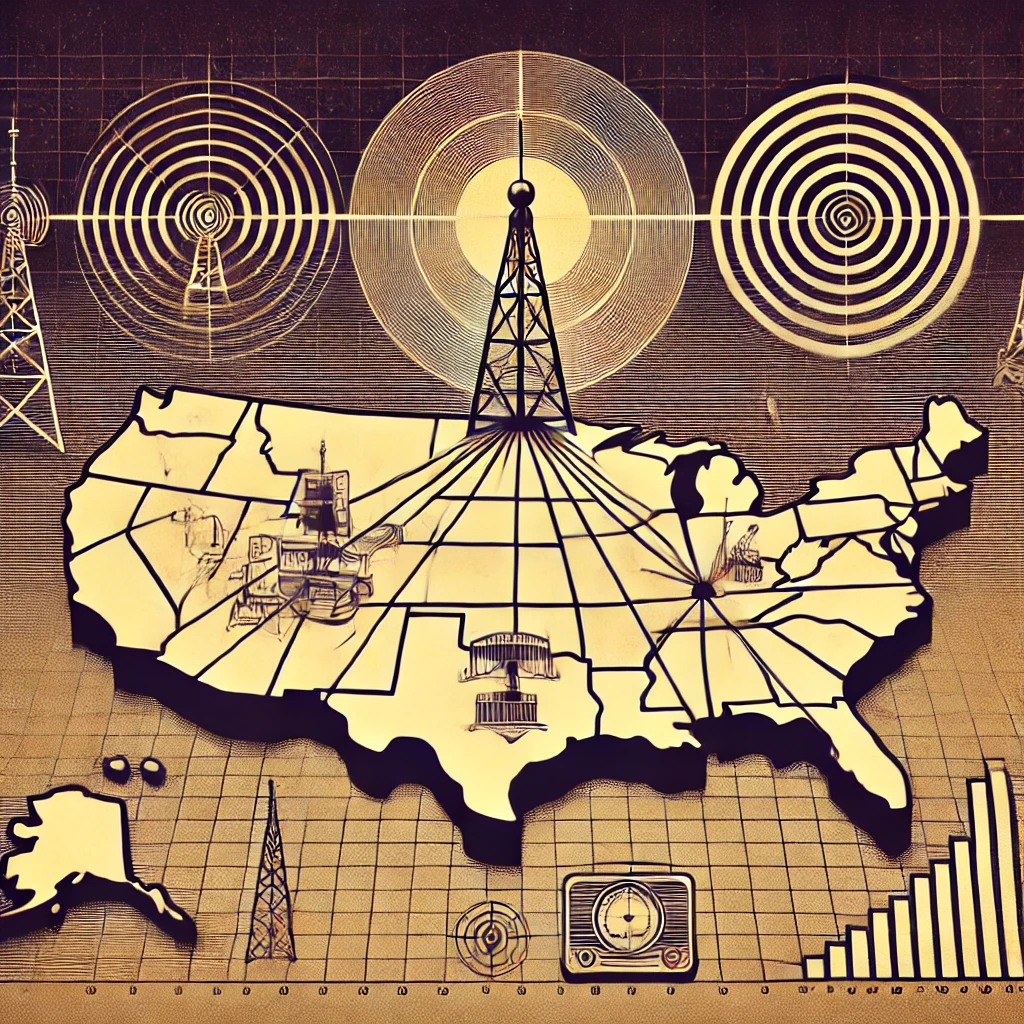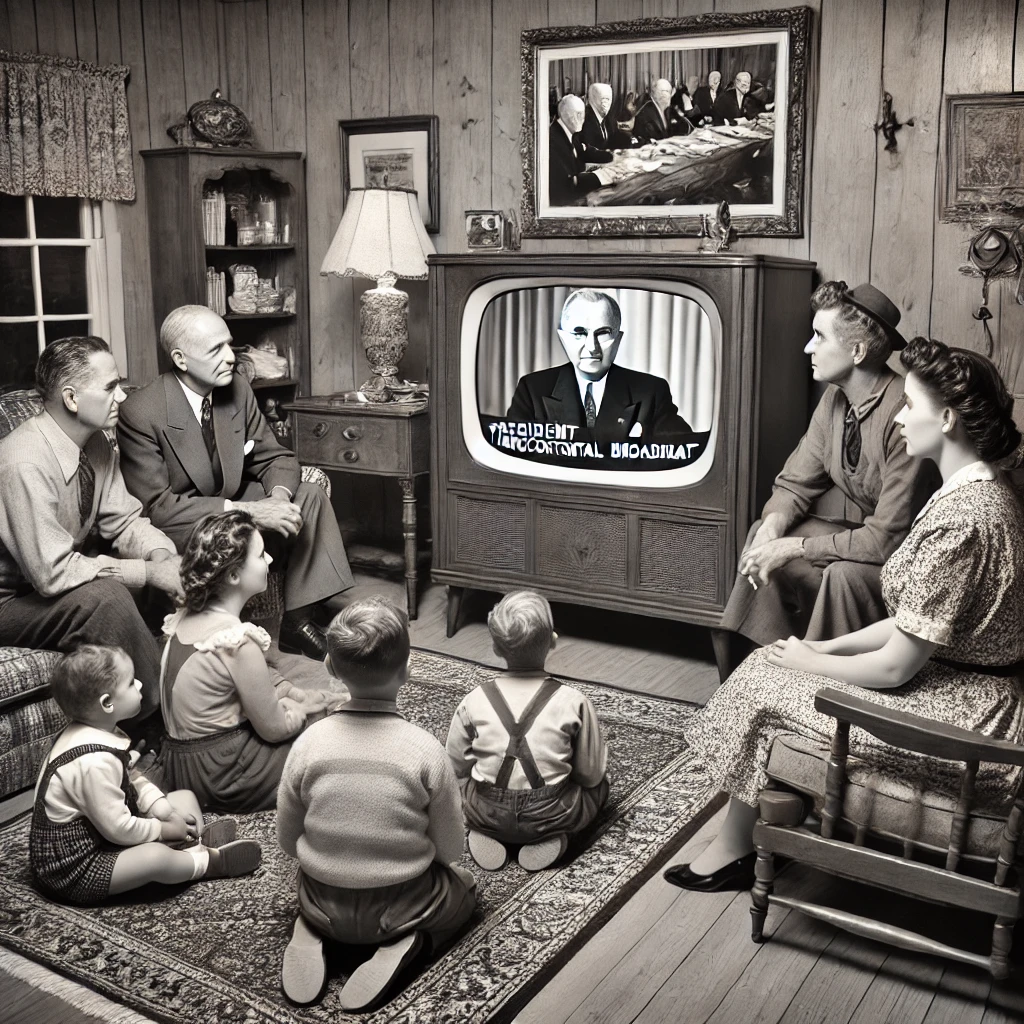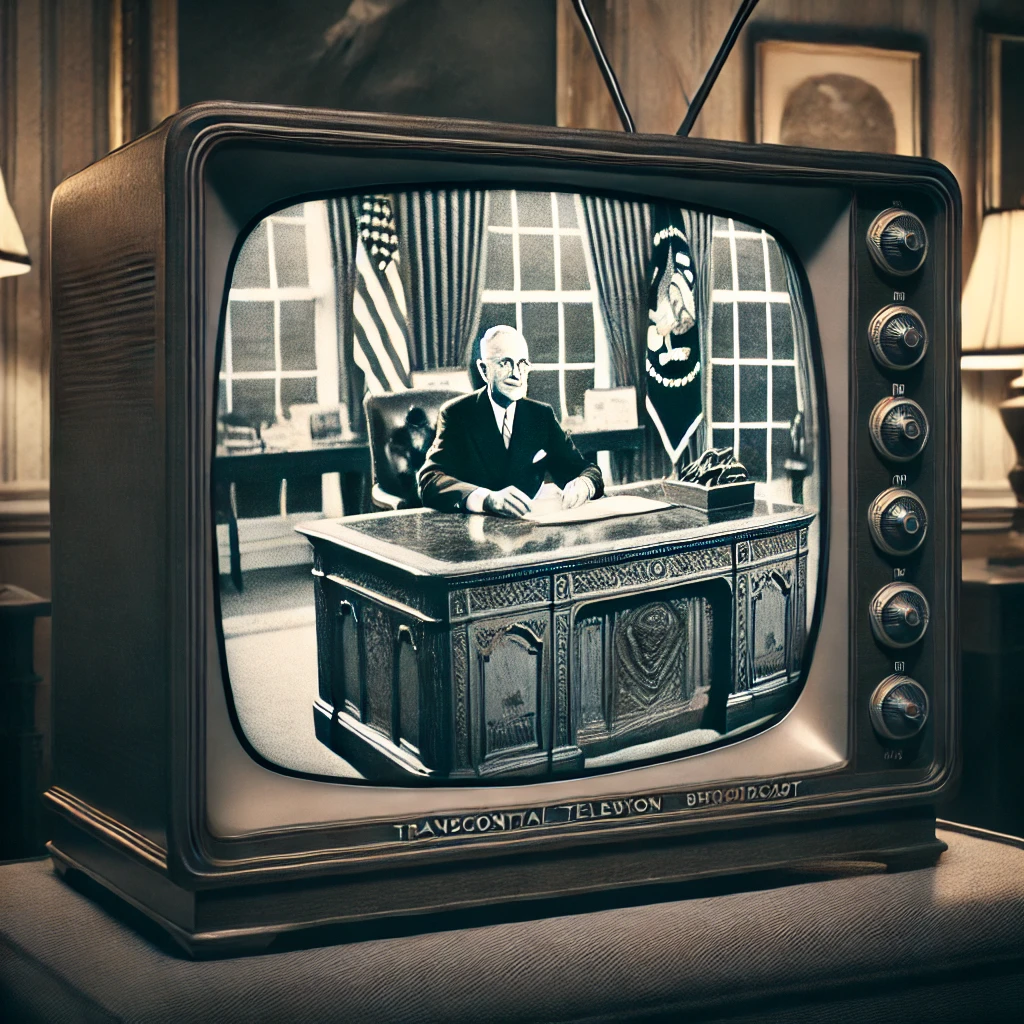On September 4, 1951, President Harry S. Truman made history by participating in the first transcontinental television broadcast. This landmark event marked a significant milestone in the evolution of television and communication technology, demonstrating the growing influence of media on public life and international affairs. The broadcast highlighted both the advancements in technology and the increasing role of television in shaping political and cultural landscapes.

The Context of the Broadcast
In the early 1950s, television was becoming an integral part of American life, and advancements in technology were rapidly changing how people consumed information. The September 4, 1951 broadcast was a pioneering moment that showcased the potential of television to connect people across vast distances. President Truman’s participation underscored the medium’s emerging importance in national and international communication.
The broadcast, organized by the U.S. government and television networks, was a demonstration of the capabilities of the new transcontinental television technology. It allowed viewers on both coasts of the United States to witness live events and communicate in real-time, which was a remarkable feat at the time. The event was not only a technological achievement but also a symbol of the growing influence of television in the public sphere.

The Significance of the Event
President Truman’s participation in the transcontinental television broadcast was a pivotal moment in media history. It demonstrated the potential for television to reach a broad audience and provided a glimpse into the future of media and communication. The broadcast was a significant step forward in the development of television as a medium for delivering live news and information across the country.
The event also highlighted the role of the U.S. government in supporting and promoting technological advancements. By embracing new technologies and participating in groundbreaking events like this broadcast, the government played a crucial role in shaping the future of media and communication. The broadcast helped to establish television as a powerful tool for connecting people and disseminating information on a global scale.

The September 4, 1951 transcontinental television broadcast had a lasting impact on both media and technology. It paved the way for future developments in television and broadcasting, demonstrating the potential for real-time communication over long distances. The event helped to solidify television’s role as a central medium for news and entertainment, influencing how people accessed and engaged with information.
The legacy of President Truman’s broadcast extends beyond its immediate technological achievement. It marked a turning point in the history of television, setting the stage for future innovations and the growth of media as a major force in society. The broadcast remains a notable example of how technology can bring people together and shape the way we experience and understand the world.
